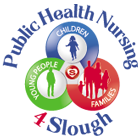VOCABULARY
In order to effectively process, store and retrieve words, we need to be able to use two sorts of information: semantic (what it means) and phonological (how it sounds).
Semantic (What it means)
e.g. helmet
- Category: clothes
- Function: protects your head
- Associations: motorbike, gloves, building site
- Similarities: hat, cap, hood
- When you might use it: dangerous activities
Phonological (How it Sounds)
e.g. helmet
- Syllables: two
- Rhyme: pelmet
- Initial sound: ‘h’
- Final sound: ‘t’
- Other sounds in word: e/l/m
Unless we know a range of words our ability to use language to communicate will be limited. Essential building blocks for sentences will be:
- Nouns: (Names of things) dog, house, cloud, monument
- Verbs: (action words) sit, run, sleep, jump
- Adjectives: (describing words) big, red, hot, happy
- Adverbs: (describing how you do something) happily, quickly
- Pronouns: (words which stand for nouns) I, we, it, they
- Other: under, through, next, yesterday, because, when, so
TOP TIP: Make vocabulary important in the classroom. Research has shown that even the most able child will not quickly acquire new words without explicit teaching.

